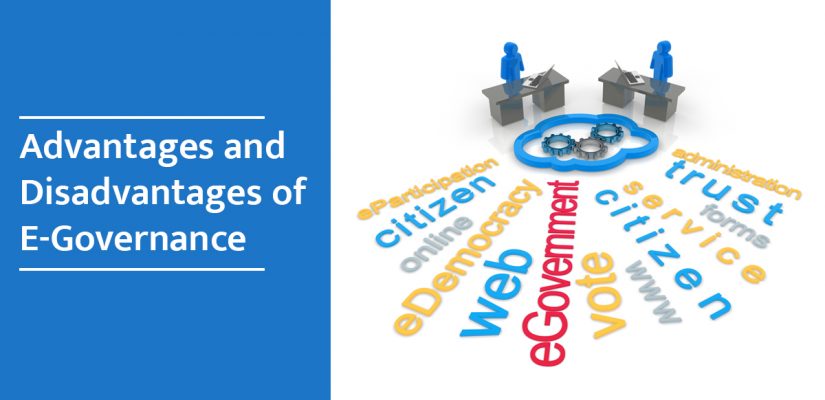
Advantages and Disadvantages of E-Governance
Governments around the world are undertaking steps to integrate IT in all governmental structures due to the exponential growth of the internet and digitization. This is the e-government idea. This is in order to make sure the Govt. Management is a smoother and much more transparent process. It also helps save considerable expenses.
What is E-Governance?
E-Governance may be described as communications and information technology systems for the provision of government services, information sharing, transfers, incorporation of established services and information portals. It makes it simple, effective, transparent, completely responsible, and accountable for the entire administrative process. E-Governance is a prerequisite in a country like India, both in the government and the private sector, as a fast-growing economy and a rising world leader.
Advantages of E-Governance
- Speed
Technology allows swifter correspondence. Smartphones have the Internet, allowing high amounts of data to be shared immediately all over the world.
- Saving Costs
For official reasons, a lot of government funding goes into the expense of purchasing stationery. A number of stationery is taken up with correspondence and written documents. Nevertheless, replacing them with smartphones and the internet will save crores of cash in costs per year.
- Transparency
The use of e-governance aims to make all organisational activities transparent. It is easy to post all government records to the internet. In fact, people have access to whatever information they want, anytime they want, at the click of a mouse or at the tap of a finger.
The government must, however, ensure that all information is made available and uploaded to government information sites on the internet for this purpose.
- Accountability
Transparency connects directly with accountability. We could consider them responsible for their acts until the roles of the government are available.
Disadvantages of E-Governance
- Interpersonal contact deficit
The biggest downside to e-governance is that interpersonal contact is lost. An component of conversation that many people consider vital is interpersonal communication.
- High cost of setup and technical problems
Technology still has its pitfalls. Specifically, the cost of setup is very high and the computers have to be maintained frequently. Computers and the internet will also break down as well and create a hole in government work and programmes.
- Illiteracy
In India, a huge number of people are illiterate and therefore do not understand exactly how to use smartphones and computers. For them, e-governance is really hard to access and comprehend.
- Cybercrime/Personal Knowledge Disclosure
There is still the possibility of compromised private data by people deposited in government facilities. Cybercrime is a severe problem, a data theft will make the public lose trust in the capacity of the government to rule the population.
Conclusion-
The primary aim of e-government is to be able to reliably and cost-effectively give people an expanded portfolio of public services. It promotes political accountability and it encourages the people to be aware about what the government is working on as well as the measures they are aiming to enforce. Legal Way LLP is a leading company that provides respectable firms with different business strategies. Connect with us for more information on how to develop your business.